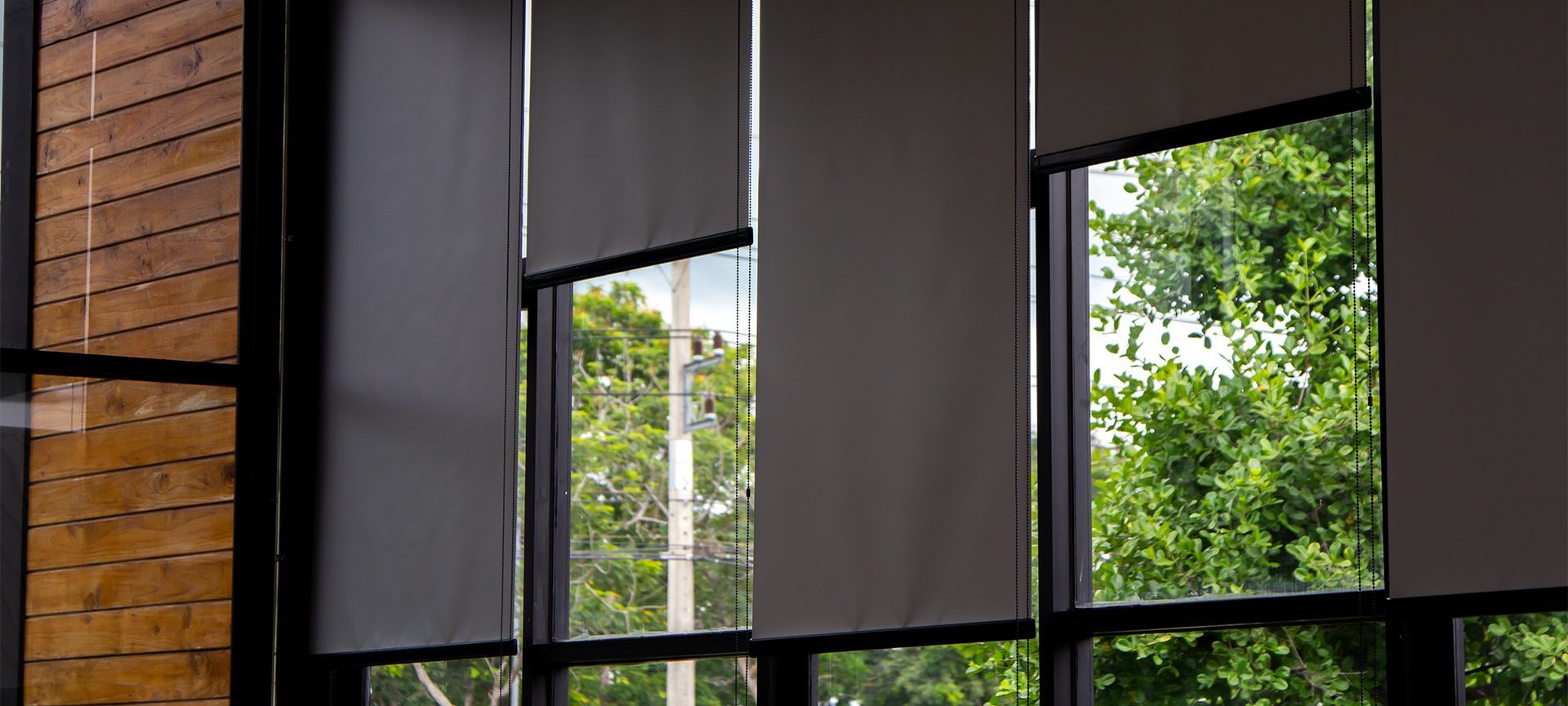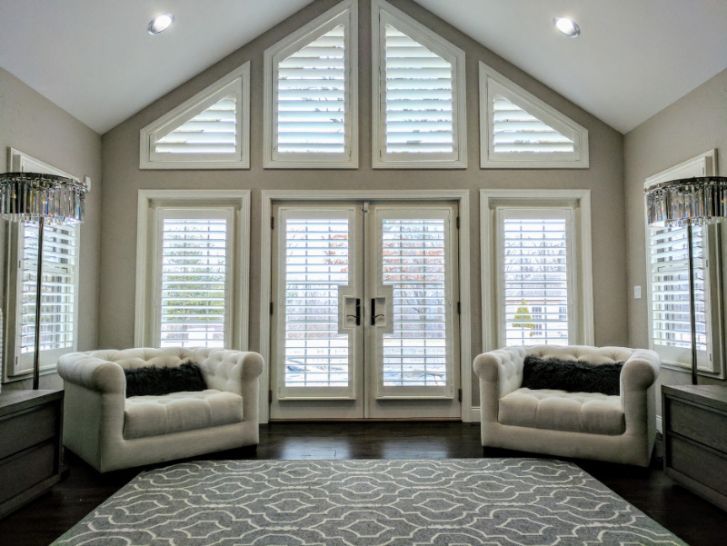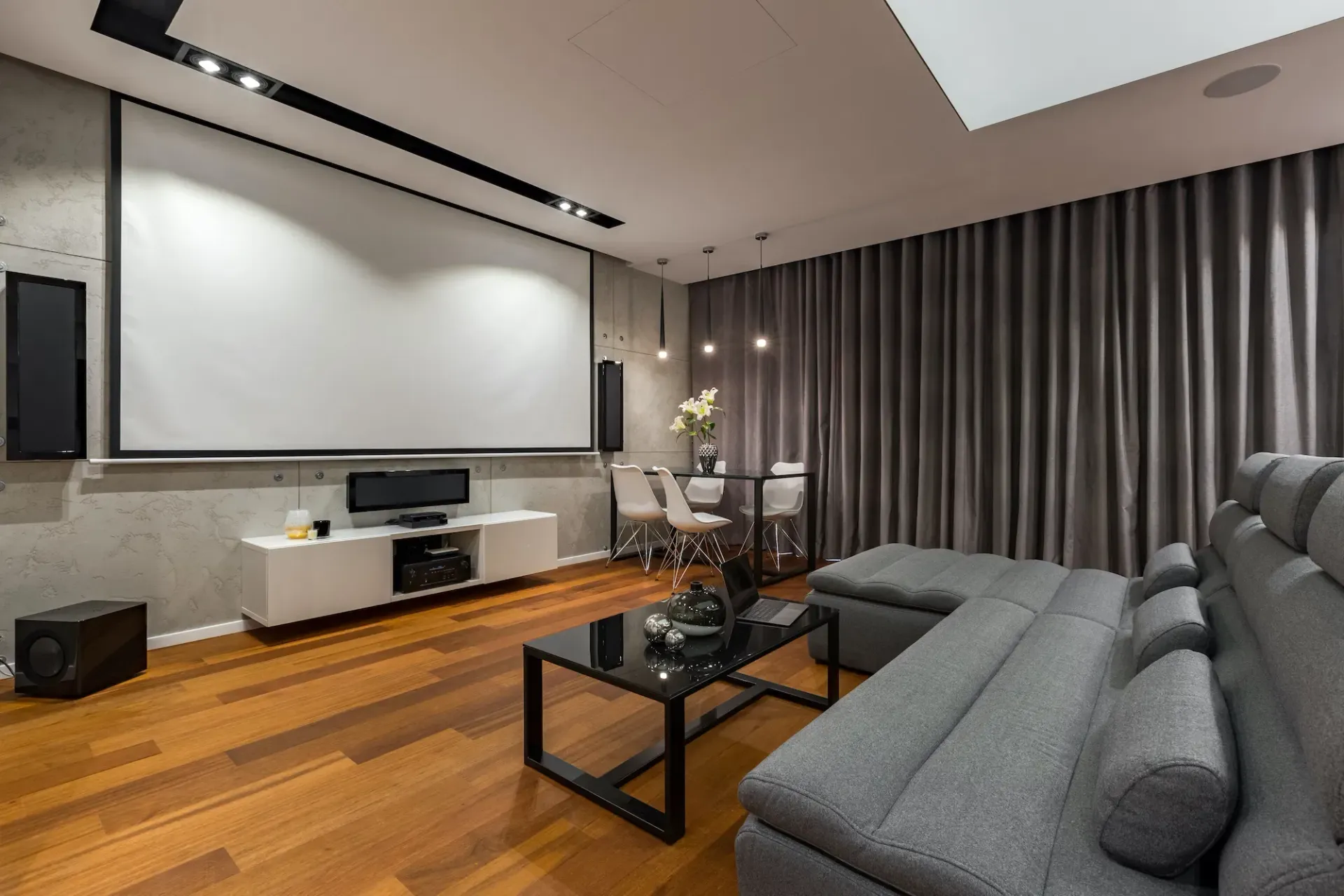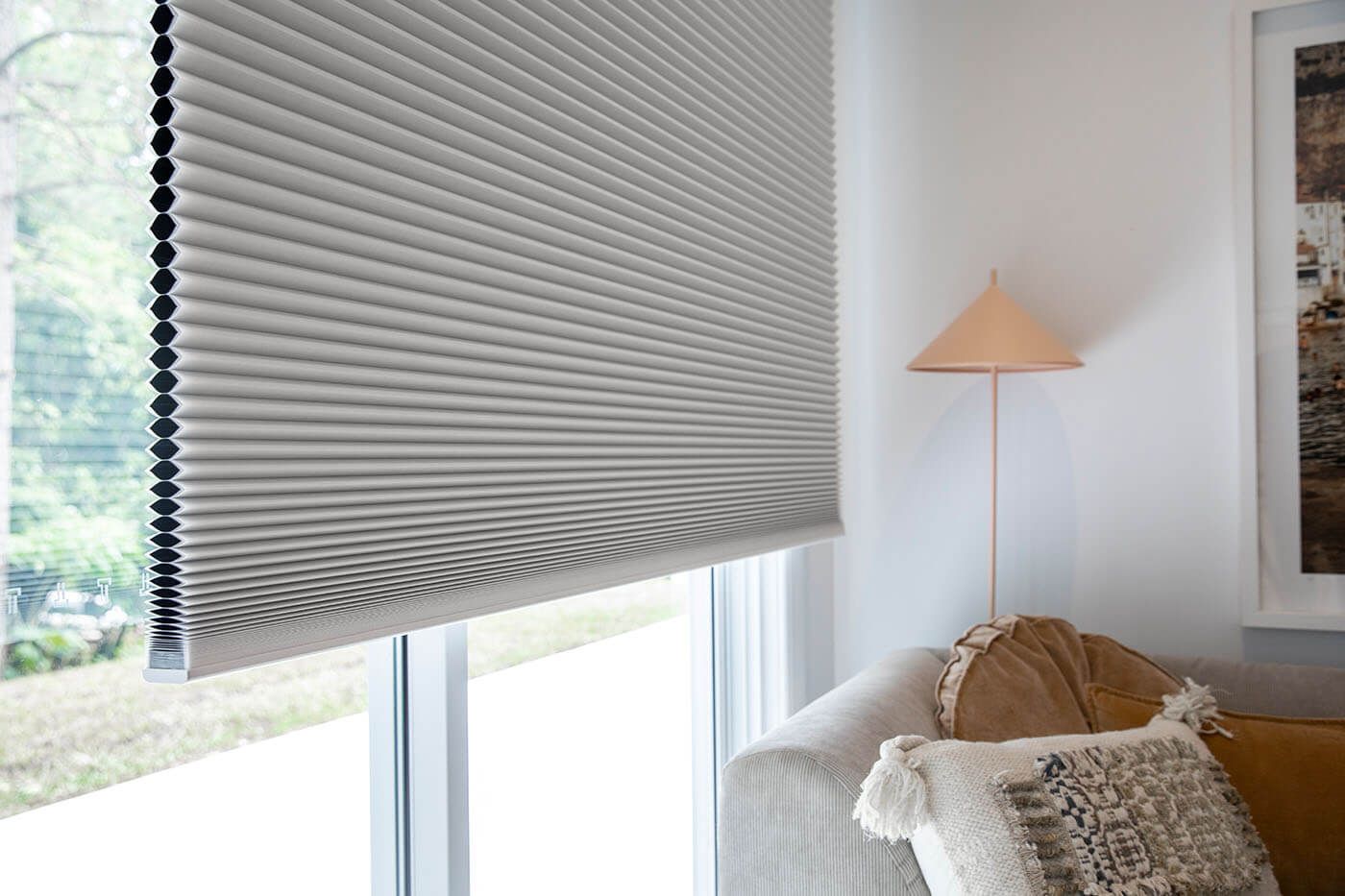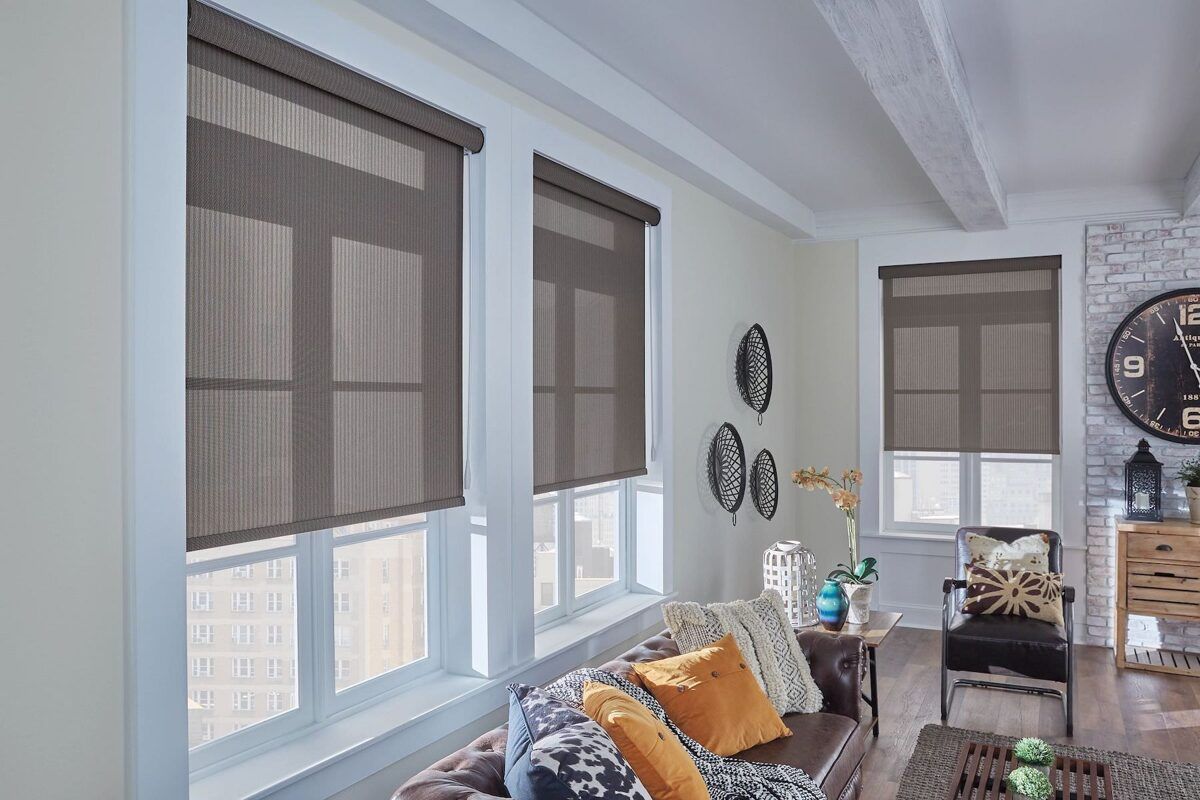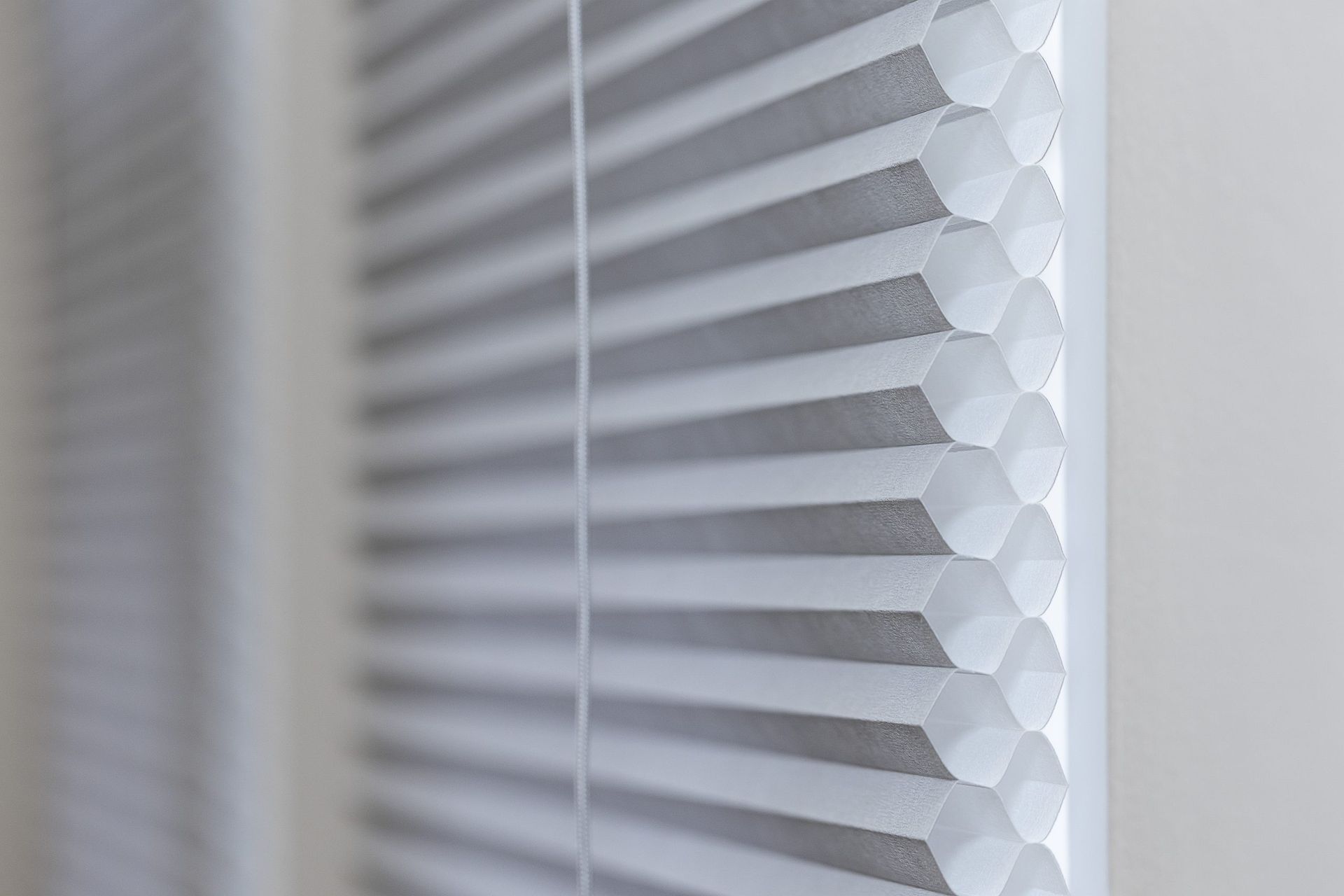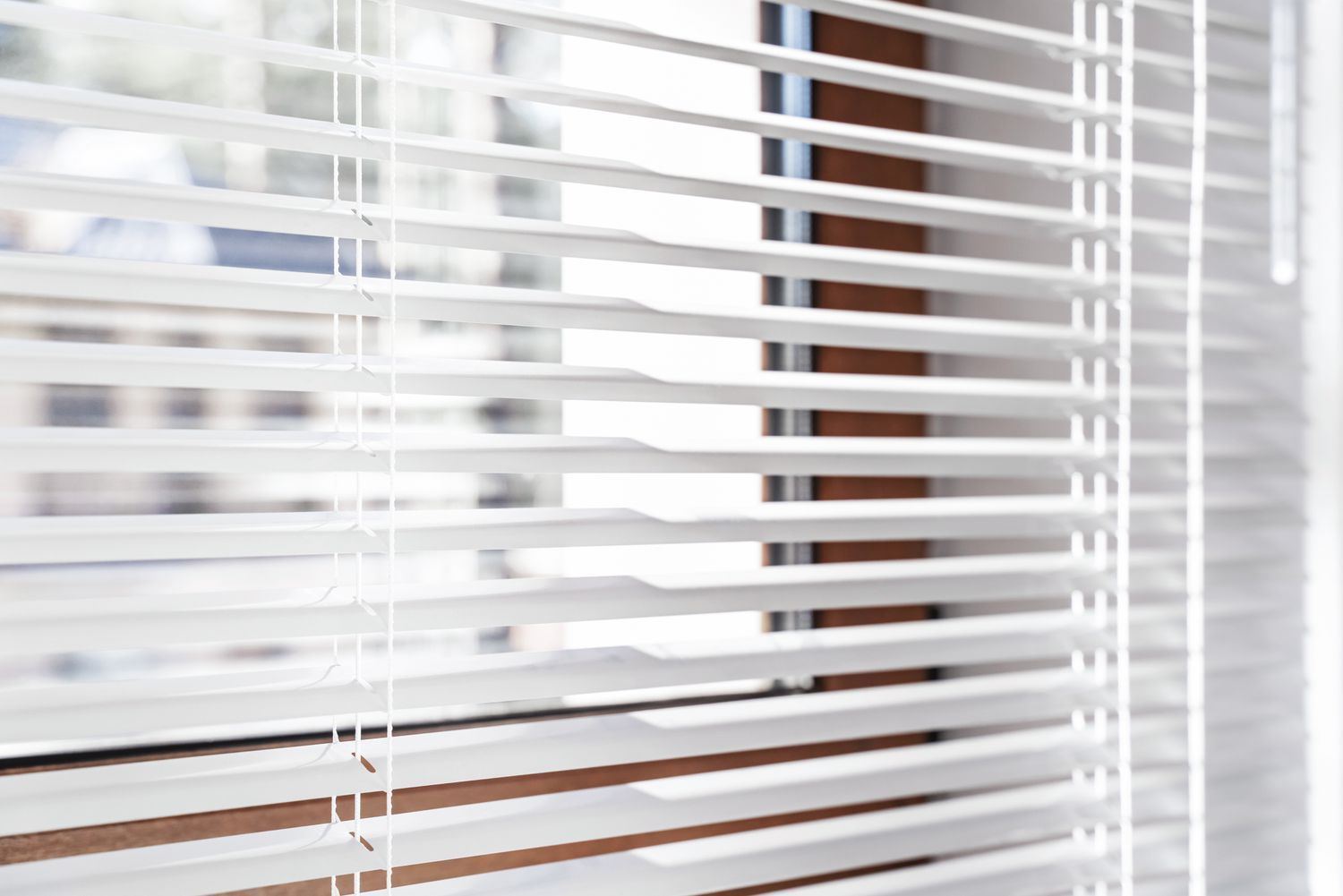Can You See Through Slat Blinds at Night?
TLDR;
Yes, you can see through slat blinds at night, especially when the lights are on inside and it's dark outside. The visibility depends on the slat angle, material, lighting, and whether or not the blinds are paired with other privacy-enhancing treatments.
What Are Slat Blinds and How Do They Work?

Slat blinds—also known as horizontal or vertical blinds—are one of the most common window treatments for homes and offices. They’re made up of individual slats that tilt open or closed to control light and privacy.
Types of slat blinds include:
- Venetian blinds – Horizontal slats, typically made of aluminum,
faux wood, or
real wood
- Vertical blinds – Often used for patio doors and large windows
- Mini blinds – Narrower slats, commonly aluminum
Common materials used:
- Wood – Natural, insulating, more opaque
- Faux wood – Moisture-resistant, cost-effective
- Aluminum – Lightweight, sleek, but less insulating
- PVC/plastic – Affordable, durable, basic in appearance
Why people choose slat blinds:
- Easy light control
- Aesthetic variety
- Cost-effective
- Simple to maintain
Can You See Through Slat Blinds at Night?
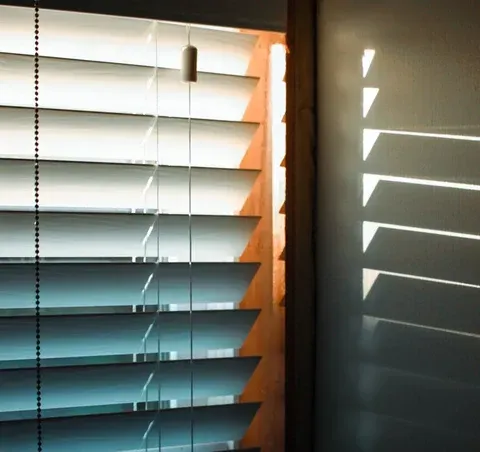
Yes—and it's a privacy issue many homeowners don’t consider until it’s too late. If you’re concerned about Blinds Visibility at Night, this section explains what happens when the lights are on indoors and the view from the street becomes crystal clear.
At night, your home's interior becomes a stage, and your slat blinds are the backdrop. When it's darker outside and your lights are on inside, the slats allow light to leak out—and views to leak in.
Why this happens:
- Light travels outward – Bright indoor light highlights the gaps between slats.
- Gaps and angles matter – Even a slightly open tilt gives passersby a peek.
- Direction of lighting – Light inside the room overpowers the darkness outside, making silhouettes visible.
This creates what experts call a
reverse visibility effect: you can't see outside, but others can see in.
What Affects Nighttime Visibility Through Slat Blinds?
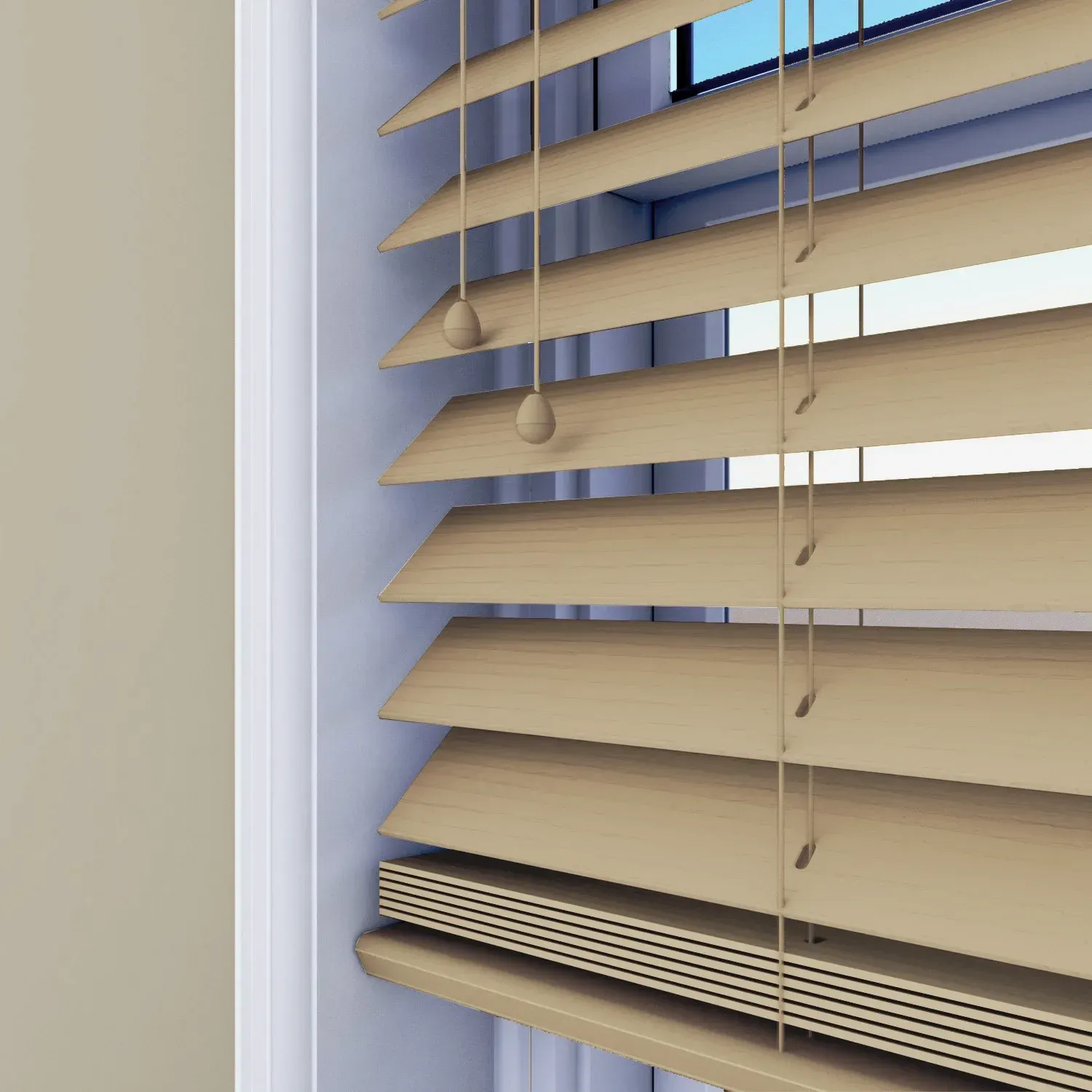
Several factors influence whether your slat blinds protect your privacy at night:
1. Slat Tilt and Angle
- When tilted
upward (top facing out) – better privacy from the outside looking in
- When tilted
downward (top facing in) – more light leaks, more visibility from outside
Tip: Always tilt the slats upward at night to deflect line of sight from street level.
2. Material Opacity
- Wood/faux wood – Less transparent, better at blocking light
- Aluminum – Thinner, more prone to showing silhouettes
- PVC or vinyl – Mid-level privacy
3. Slat Size and Spacing
- Larger slats = larger gaps
- Tighter spacing = better privacy
- Mini blinds offer more coverage due to narrow slats
4. Interior Light Source
- Overhead lights cast downward shadows, increasing visibility through gaps
- Lamps or task lights closer to windows enhance shadow definition
5. Window Position
- Ground-level windows are easier to see through
- Elevated windows provide slightly more inherent privacy but are not immune
Comparing Different Blinds for Nighttime Privacy
| Blind Type | Nighttime Privacy | Pros | Cons |
|---|---|---|---|
| Slat Blinds | Moderate | Adjustable, classic look | Gaps create visibility risks |
| Blackout Shades | Excellent | Complete darkness, high privacy | No adjustability |
| Zebra/Layered Shades | Good | Stylish, layered for light filtering | Not 100% private |
| Sheer Curtains | Poor | Soft aesthetic | No privacy at night |
| Top-Down Bottom-Up | Good | Flexible light control | Needs coordination |
| Smart Blinds | Excellent | Automation + privacy control | Expensive upfront |
Observation: Slat blinds strike a balance, but they’re not the best on their own for full nighttime privacy.
How to Make Slat Blinds More Private at Night
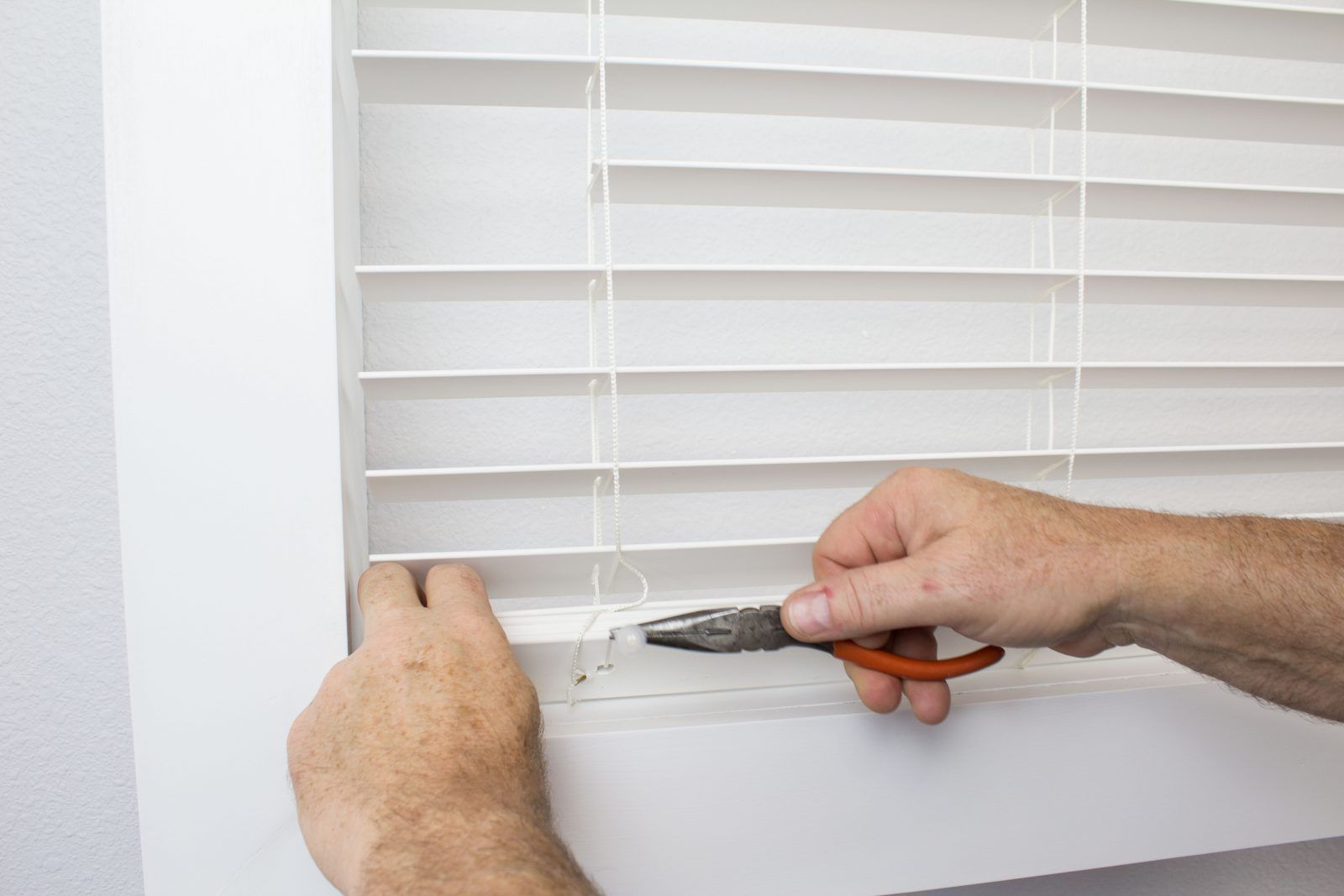
If you already have slat blinds and love the look, you don’t have to start from scratch. There are several ways to boost privacy without replacing them entirely.
Adjust the Slats Correctly
- Tilt
upward at night to block sightlines from street level
- Close them fully if you won’t be adjusting them for airflow or light
Add Layers
- Pair with curtains or drapes – Sheer by day, blackout at night
- Install a roller shade behind the slats – Layered approach for total light control
- Use top-down bottom-up blinds – Combine them with slat blinds for added versatility
Apply Privacy Window Film
- Available in frosted, tinted, or decorative options
- Allows light in while blocking views
- Cost-effective and renter-friendly
Switch to Smart Privacy Solutions
- Smart slat blinds – Automate tilt based on time of day or lighting
- Motorized blackout shades – Lower automatically after sunset
- Dual-layer blinds – Combine slats with fabric for stylish coverage
Advanced Home Privacy Enhancements
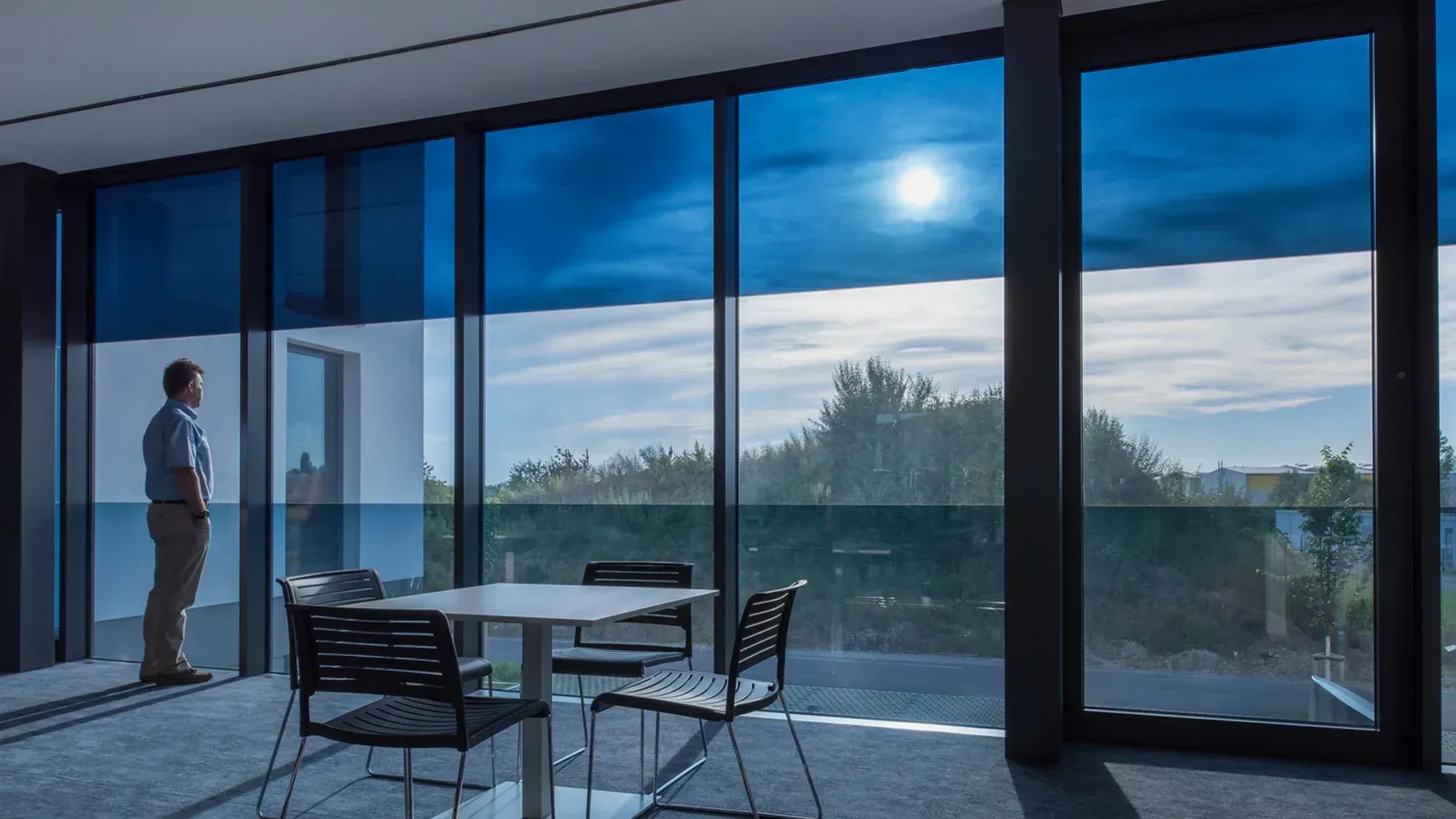
Want a futuristic approach? These solutions take window privacy to the next level.
Smart Glass
- Also known as
electrochromic glass
- Changes opacity at the push of a button or on a timer
- Found in luxury homes, offices, and tech-forward designs
Interior Design for Privacy
- Use
indoor plants like fiddle leaf figs or bamboo near windows
- Install
decorative privacy screens
- Position
furniture away from direct window alignment
Common Questions About Slat Blind Privacy
Can neighbors see through horizontal blinds at night?
Yes, if your lights are on and slats are open or tilted down, neighbors can see inside—especially from street level.
Are blinds or curtains better for privacy?
Blinds offer control. Curtains offer coverage. For full privacy, combine both.
Should I use blackout liners with slat blinds?
Absolutely, especially in bedrooms or bathrooms where privacy is a must.
Which direction should I tilt slats at night?
Tilt upward (slats angled toward the ceiling) for the most effective privacy.
What color blinds block the most light?
Darker colors absorb more light, but privacy depends more on material and layering than color alone.
Choosing the Right Privacy Solution for Your Home

At Love Is Blinds MI, we know every window—and every homeowner—is different.
When deciding on blinds or combinations, consider:
- Room function – Bedrooms need more privacy than kitchens
- Window location – Street-facing vs. backyard vs. upper floor
- Your lifestyle – Do you close your blinds manually or prefer automation?
If privacy is a concern, we recommend:
- Slat blinds
paired with blackout curtains
- Smart blinds with schedule features
- Adding tint or privacy film
- Exploring dual-layer or top-down bottom-up options
Your windows deserve more than one layer of thought. Whether you live in a high-rise, a suburb, or downtown, your home’s privacy should never be compromised.


